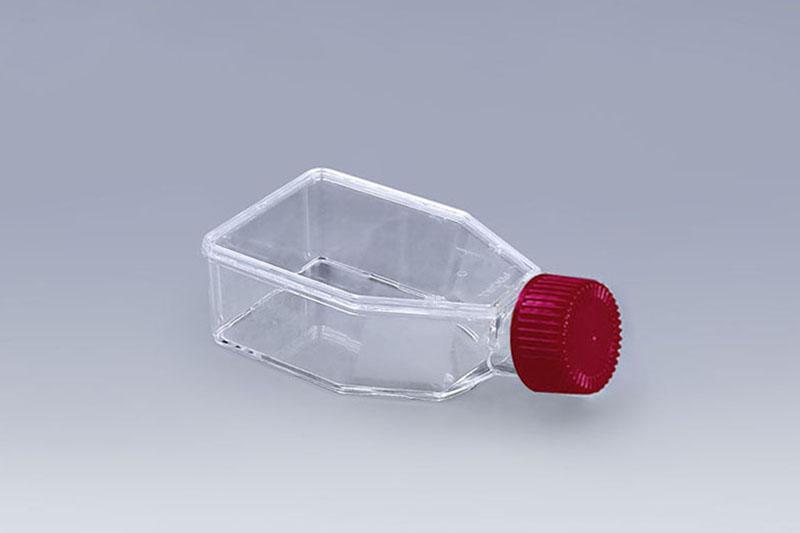We all know that cell culture flasks are used very frequently in various cell culture experiments, and its various intimate designs make it easier for us to operate during the experiment. Careful people may have discovered that the bottom of the bottle is designed with a circular arc. What are the benefits of such a design?
FuDau T25 Cell Culture Flasks
The common specifications of cell culture flasks include T25cm², T75cm², T175cm², T225cm², and we can choose the corresponding specifications according to the scale of cell culture. This kind of culture container is generally used in the culture of adherent cells. Adherent cells are different from suspension cells and need to be attached to the surface of the support to grow. In other words, adherent cells need to attach to the bottom of the bottle to grow, and the arc design allows cells to easily obtain a more complete growth surface.
When the adherent cells grow to a certain extent, they need to be passaged in time, and because the cells are attached to the bottom of the bottle, they generally need to be digested with trypsin, and with the help of tools such as pipettes and cell scrapers, the arc design has no dead ends and is more convenient. Convenient, this design is very friendly to researchers.
Of course, in addition to the arc design of the bottom of the bottle, the cell culture bottle also has many thoughtful small designs, such as a frosted area on the side of the bottle neck, which is convenient for writing; The neck design is to facilitate the entry of pipettes or cell scrapers; have you noticed these intimate designs?
The FAI climbed 5.9 percent year-on-year in the first 11 months of 2018, quickening from the 5.7-percent growth in Jan-Oct, the National Bureau of Statistics (NBS) said Friday in an online statement.
The key indicator of investment, dubbed a major growth driver, hit the bottom in August and has since started to rebound steadily.
In the face of emerging economic challenges home and abroad, China has stepped up efforts to stabilize investment, in particular rolling out measures to motivate private investors and channel funds into infrastructure.
Friday's data showed private investment, accounting for more than 60 percent of the total FAI, expanded by a brisk 8.7 percent.
NBS spokesperson Mao Shengyong said funds into weak economic links registered rapid increases as investment in environmental protection and agriculture jumped 42 percent and 12.5 percent respectively, much faster than the average.
In breakdown, investment in high-tech and equipment manufacturing remained vigorous with 16.1-percent and 11.6-percent increases respectively in the first 11 months. Infrastructure investment gained 3.7 percent, staying flat. Investment in property development rose 9.7 percent, also unchanged.
 English
English



















































